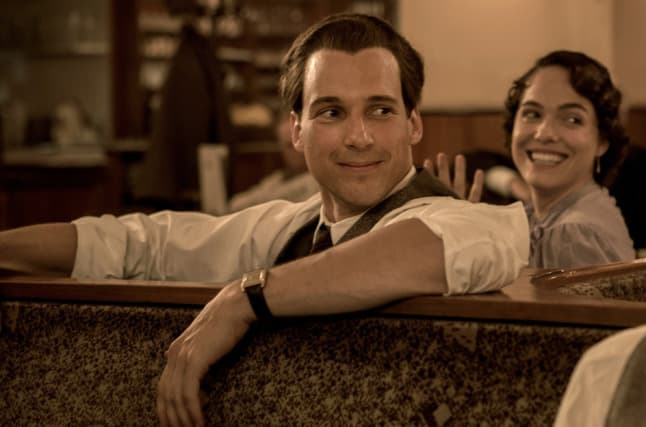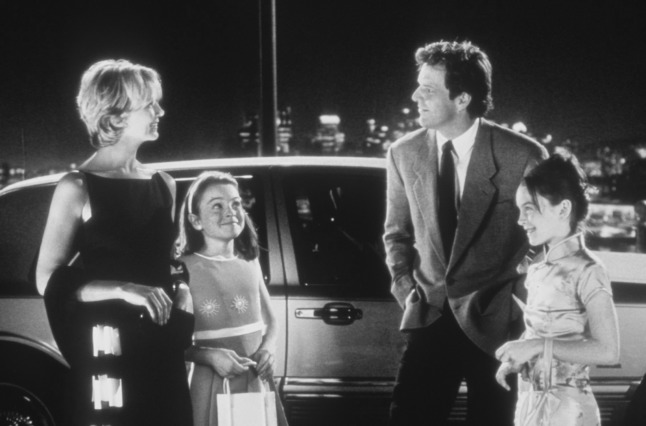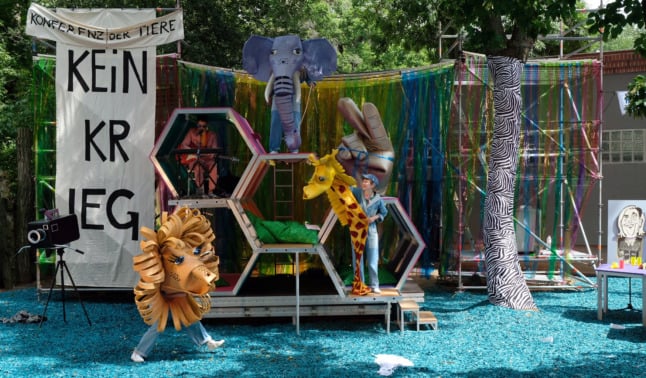A guide to Erich Kästner: the father of German children's books

When most people think of German authors, Goethe, Kafka and Mann are the first to come to mind - but Dresden-born Erich Kästner has also made a huge impact on the German literary scene. You may be surprised to see some stories you recognise included in this list of his major works.
Erich Kästner was primarily known for his numerous children’s books, many of which have been adapted into classic films, both in English and in their original German language.
His works are noted for their realistic settings, which was a major change from most children’s novels at the time, and the fact that their social commentary is still considered relevant today. Kästner frequently depicted the adult world in a negative way, contrasting with that of children, symbolizing a hope for the development of humanity and its future.
He was also a pacifist and actively opposed the Nazi regime, which resulted in much of his work being banned and burned in the spring of 1933.
Since then, however, most of his works have remained in publication.
Here are five of his most popular works and why they continue to stand the test of time.
Lottie and Lisa (original title: Das doppelte Lottchen)
This classic novel revolves around a set of twin girls separated at birth who reunite years later at a summer camp. English-speaking audiences may be more familiar with the two Disney adaptations, titled The Parent Trap, but there have been many others in a number of languages, including German, Japanese, Hindi and Korean.
While Kästner came up with the concept as a film in 1942, due to strict film laws by the Nazis, the project was dropped, and Kästner worked out the story into a novel after the war. The subject of divorce plays a major role in the novel and the introduction of an independent, single and working mother as a character was praised. The work also stands out for its two main characters being girls, which was unusual for Kästner’s work at the time. The central storyline is used as inspiration in a number of modern works, and even a tramway in Dresden was named after the two title characters.

A scene from the 1990s Disney film, Parent Trap, which was based on Kästner's 'Lottie and Lisa'. Photo: picture-alliance / dpa | Ipol
Emil and the Detectives (original title: Emil und die Detektive)
Probably one of Kästner’s most well-known works, Emil and the Detectives was published in 1929 and became an instant hit upon its release. It contrasted with most of German children’s literature at the time by not being fairytale-like or moralizing, instead depicting humour and adventure in a modern, mundane setting.
The story follows Emil Tischbein, a twelve-year-old boy who has his money stolen from him on the train to Berlin, prompting him and several children to gather, find the thief and solve the crime. Like in many of his works, it is the children who are the heroes of the story, restoring peace to society, in contrast to the adult’s ineptitude. The novel has had several adaptions, both in film and on the stage as well as a sequel, which was published in 1934. You can also view the original typescripts of the novel, as they are on display in the Literaturmuseum der Moderne in Marbach, Baden-Württemberg.
READ ALSO: From shocking storytelling to diverse characters: How Germany’s children’s books are changing
The Flying Classroom (original title: Das fliegende Klassenzimmer)
The Flying Classroom is set in a boarding school in Bavaria and follows five friends rehearsing for a play (“The Flying Classroom”, hence the book title), who face a rivalry with another school amongst other everyday issues. The novel has been deemed timeless by critics and has been applauded for addressing issues such as childhood abandonment, poverty and the yearning for approval. The book has had three film adaptations, starring popular German actors such as Joachim Fuchsberger, Ulrich Noethen and Sebastian Koch, and has become a permanent feature in many German school’s curricula.

A mask is placed on the statue of Erich Kästner outside of the Erich Kästner Museum in Dresden. Photo: picture alliance/dpa/dpa-Zentralbild | Sebastian Kahnert
Annaluise and Anton (original title: Pünktchen und Anton)
Published in 1931, Annaluise and Anton explores the lives of two children from vastly different social classes, Annaluise coming from a wealthy family living in a mansion and Anton, from a poorer family, who has to care for his sick mother in their small, run-down apartment. Despite their different backgrounds, the two become close friends.
The novel has been praised for its social commentary, with Kästner interspersing so-called “afterthoughts” between the chapters of the story, in which he addresses several ethical questions. Like most of Kästner’s works, Annaluise and Anton has been adapted into two German films, released in 1952 and 1999 respectively, as well as a children’s opera, a musical and a play. It was also one of Kästner’s novels that was burnt in the Nazi book burnings - a moment commemorated by a stone memorial plaque in Bonn’s market square to this day.
READ ALSO: How a Hamburg woman handled her father’s secret Nazi past
The Animals’ Conference (original title: Die Konferenz der Tiere)
The Animals’ Conference was Kästner’s first novel published after the Second World War in 1949 and therefore carries many allusions to real-life events in Germany at the time. In the book, representatives of all animal species on earth call an international conference to achieve world peace, due to the political failure of humans.

Actors use puppets in a dramatisation of Kästner's Animal Conference in Leipzig. Photo: picture alliance / Birgit Zimmermann/dpa-Zentralbild/dpa | Birgit Zimmermann
It is probably Kästner’s most obvious portrayal of his anti-militarist, pacifist views, and the need to protect the welfare of children – a frequent motto used by the animals in the story is “It’s about the children”. The book also features strong satire on German bureaucracy and the military. It is therefore no surprise that this novel remains relevant today and is willingly read by both children and adults. Two animated film adaptations have been released, though Walt Disney himself turned down the opportunity due to the story being too political.
While these books are aimed at children, their messages and impact can be appreciated and understood by people of all ages. It is therefore no surprise that Kästner has become a household name of Germany, being a recipient of a number of literary prizes and having over 96 streets and 100 schools named after him.
If you're interesting in finding out more about this classic German author, you can visit the Erich Kästner Museum in Dresden or find plaques honouring the author in his birthplace in Dresden and at his former residences in Berlin.
READ ALSO:
Comments
See Also
Erich Kästner was primarily known for his numerous children’s books, many of which have been adapted into classic films, both in English and in their original German language.
His works are noted for their realistic settings, which was a major change from most children’s novels at the time, and the fact that their social commentary is still considered relevant today. Kästner frequently depicted the adult world in a negative way, contrasting with that of children, symbolizing a hope for the development of humanity and its future.
He was also a pacifist and actively opposed the Nazi regime, which resulted in much of his work being banned and burned in the spring of 1933.
Since then, however, most of his works have remained in publication.
Here are five of his most popular works and why they continue to stand the test of time.
Lottie and Lisa (original title: Das doppelte Lottchen)
This classic novel revolves around a set of twin girls separated at birth who reunite years later at a summer camp. English-speaking audiences may be more familiar with the two Disney adaptations, titled The Parent Trap, but there have been many others in a number of languages, including German, Japanese, Hindi and Korean.
While Kästner came up with the concept as a film in 1942, due to strict film laws by the Nazis, the project was dropped, and Kästner worked out the story into a novel after the war. The subject of divorce plays a major role in the novel and the introduction of an independent, single and working mother as a character was praised. The work also stands out for its two main characters being girls, which was unusual for Kästner’s work at the time. The central storyline is used as inspiration in a number of modern works, and even a tramway in Dresden was named after the two title characters.

A scene from the 1990s Disney film, Parent Trap, which was based on Kästner's 'Lottie and Lisa'. Photo: picture-alliance / dpa | Ipol
Emil and the Detectives (original title: Emil und die Detektive)
Probably one of Kästner’s most well-known works, Emil and the Detectives was published in 1929 and became an instant hit upon its release. It contrasted with most of German children’s literature at the time by not being fairytale-like or moralizing, instead depicting humour and adventure in a modern, mundane setting.
The story follows Emil Tischbein, a twelve-year-old boy who has his money stolen from him on the train to Berlin, prompting him and several children to gather, find the thief and solve the crime. Like in many of his works, it is the children who are the heroes of the story, restoring peace to society, in contrast to the adult’s ineptitude. The novel has had several adaptions, both in film and on the stage as well as a sequel, which was published in 1934. You can also view the original typescripts of the novel, as they are on display in the Literaturmuseum der Moderne in Marbach, Baden-Württemberg.
READ ALSO: From shocking storytelling to diverse characters: How Germany’s children’s books are changing
The Flying Classroom (original title: Das fliegende Klassenzimmer)
The Flying Classroom is set in a boarding school in Bavaria and follows five friends rehearsing for a play (“The Flying Classroom”, hence the book title), who face a rivalry with another school amongst other everyday issues. The novel has been deemed timeless by critics and has been applauded for addressing issues such as childhood abandonment, poverty and the yearning for approval. The book has had three film adaptations, starring popular German actors such as Joachim Fuchsberger, Ulrich Noethen and Sebastian Koch, and has become a permanent feature in many German school’s curricula.

A mask is placed on the statue of Erich Kästner outside of the Erich Kästner Museum in Dresden. Photo: picture alliance/dpa/dpa-Zentralbild | Sebastian Kahnert
Annaluise and Anton (original title: Pünktchen und Anton)
Published in 1931, Annaluise and Anton explores the lives of two children from vastly different social classes, Annaluise coming from a wealthy family living in a mansion and Anton, from a poorer family, who has to care for his sick mother in their small, run-down apartment. Despite their different backgrounds, the two become close friends.
The novel has been praised for its social commentary, with Kästner interspersing so-called “afterthoughts” between the chapters of the story, in which he addresses several ethical questions. Like most of Kästner’s works, Annaluise and Anton has been adapted into two German films, released in 1952 and 1999 respectively, as well as a children’s opera, a musical and a play. It was also one of Kästner’s novels that was burnt in the Nazi book burnings - a moment commemorated by a stone memorial plaque in Bonn’s market square to this day.
READ ALSO: How a Hamburg woman handled her father’s secret Nazi past
The Animals’ Conference (original title: Die Konferenz der Tiere)
The Animals’ Conference was Kästner’s first novel published after the Second World War in 1949 and therefore carries many allusions to real-life events in Germany at the time. In the book, representatives of all animal species on earth call an international conference to achieve world peace, due to the political failure of humans.

Actors use puppets in a dramatisation of Kästner's Animal Conference in Leipzig. Photo: picture alliance / Birgit Zimmermann/dpa-Zentralbild/dpa | Birgit Zimmermann
It is probably Kästner’s most obvious portrayal of his anti-militarist, pacifist views, and the need to protect the welfare of children – a frequent motto used by the animals in the story is “It’s about the children”. The book also features strong satire on German bureaucracy and the military. It is therefore no surprise that this novel remains relevant today and is willingly read by both children and adults. Two animated film adaptations have been released, though Walt Disney himself turned down the opportunity due to the story being too political.
While these books are aimed at children, their messages and impact can be appreciated and understood by people of all ages. It is therefore no surprise that Kästner has become a household name of Germany, being a recipient of a number of literary prizes and having over 96 streets and 100 schools named after him.
If you're interesting in finding out more about this classic German author, you can visit the Erich Kästner Museum in Dresden or find plaques honouring the author in his birthplace in Dresden and at his former residences in Berlin.
READ ALSO:
Join the conversation in our comments section below. Share your own views and experience and if you have a question or suggestion for our journalists then email us at [email protected].
Please keep comments civil, constructive and on topic – and make sure to read our terms of use before getting involved.
Please log in here to leave a comment.